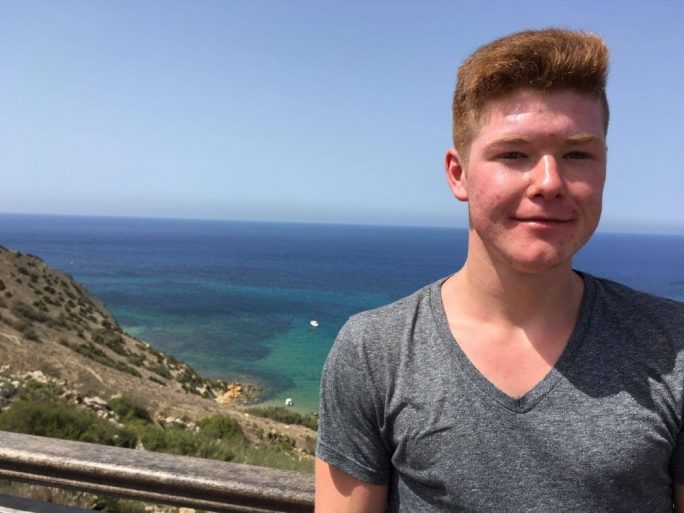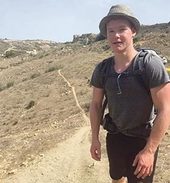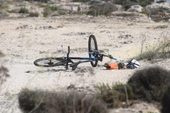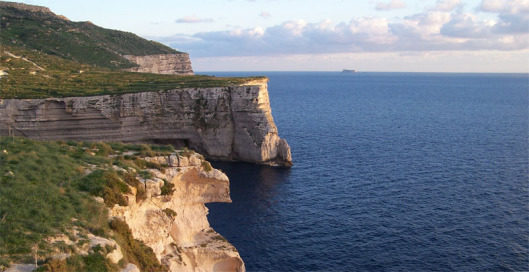This detailed article in the Nordwest Zeitung tells the story of a father unable to get answers from the Maltese authorities after his teenage son was found dead here in mysterious circumstances.
The police are uncooperative and unwilling to investigate more than they feel they must. The attorney general insists on secrecy. The medical examiner covers up the contradictions in his statement. The inquiring magistrate is powerless. And the victim's family is bewildered no one gives straight answers. Sounds familiar? Read on.
The original article is here. What follows is this website's translation.
Comment: Missing 411 is series of books by David Paulides, retired police officer, now independent investigator that details series of mysterious disappearances mostly in National parks of America but also elsewhere around the globe. The common denominators in these cases are: proximity of large body of water, "vanishing into thin air", inexplicable cause of death or curious autopsy findings in case of found bodies, majority of victims being of German descent, victims belonging to each end of the spectrum - either being in extraordinary physical or intellectual shape or having some sort of mental or physical disability. Most of these cases occur in clusters mainly in remote geographical areas, however there is a great number of cases occurring in heavily populated urban areas.
How did the Oldenburger Mike Mansholt really die?
In July 2016, 17-year-old Mike Mansholt was found dead in Malta. His body was missing the internal organs. The cause of death is unclear. We flew to Malta with Mike's father to look for answers.
OLDENBURG / MALTA "Okay. I'm renting a bike and driving through Malta today. However, the roads are so steep. I'll send you a photo shortly. You can only walk them up in some parts.With the bike it's not possible. But it does not matter. It's a sporting challenge, and I like that."
The last sign of life of Mike Mansholt was a voice message, sent via the messenger service WhatsApp on July 18, 2016 at 9:41.
On July 19, he did not return the rented mountain bike as agreed.
On July 22, he did not land at Bremen Airport as expected.
At around ten o'clock on the morning of July 26, a police search party found Mike's body among the Dingli Cliffs. He was only 17 years old. Four weeks later he would have come of age.
The cliffs
Mike's father veers the rental car to the right. He has discovered a florist. He would not like to arrive there without flowers. He buys chrysanthemums. Then he drives the little Peugeot further up the narrow street. "This could have been Mike's long drive," says Bernd Mansholt, 53 years old. He will repeat this sentence frequently in the next half hour.
On the Dingli Cliffs, as always, a few tourists walk around and look helplessly for the cliffs. They do not see them because they are on top of them. From the sea, the wind pushes. It tears small holes into the clouds. Sunbeams are falling. Temperatures are mild in Malta in November 2017.
On July 18, 2016, there were no clouds in the sky. The air stood still and burned.
From the summit a narrow path winds down. It leads through a wide open gate. Left and right cactuses proliferate. Did Mike drive down here? After a few hundred meters the trail ends in nothingness, but on the left a second path snakes up, still narrower than the first one. Did Mike keep driving? The second path ends in front of a rock face.
There the police found Mike's body.
Mike was lying in a rock depression. "Peaceful." So the police inspector has described him to his father. But what else can she tell a father? Mike's bike hung a few feet up in a bush, his sunglasses and sports shoes were a little farther down. He had probably taken them off.
Between the rocks there are iron bars everywhere. The poles are screwed to stones. Food lies on the stones, it is supposed to attract birds. It's a kind of cruel folk sport on Malta: killing birds. On the floor are cartridge cases. We actually hear a shot.
That was a suspicion back then: was Mike accidentally shot? But there was no evidence. There were no shotgun bullets in the body.
The police quickly came up with a different theory: Mike did not drive down the narrow lanes. He fell off the summit with the rented mountain bike. 29 meters and 80 centimeters from there to the site.
On the road on top, there is John. He has a small stall on the cliffs. He trades in drinks, souvenirs and cactus fruits. "Oh," he says concerned, "it's you." He remembers Bernd Mansholt. He shakes his hand. Everyone in Malta knows the case of Mike Mansholt. The boy who fell from the cliffs.
But did he?
Mike's body lay under a huge rock ledge. The spot is not visible from the summit. No one who crashes could fall there. The coroners found no fractures, no injuries, not even major wounds on Mike's body.
Mike's bike was barely damaged. It only had a flat tire and a few scratches on the frame. Mike's backpack is missing. Shouldn't that have lied next to the corpse after a crash? "Mike did not crash," says Bernd Mansholt, the father.
But what happened to Mike?
The questions
"Attention," says Bernd Mansholt, before he opens the door to the Msida Police Station: "The police here are rude." He knows that, he's been in Malta for the third time since Mike was reported missing. A bare room with high ceilings. Three policemen sit behind a counter. All three look up, nobody says anything.
"I would like to speak to Inspector Butters," says Mansholt.
"Inspector Butters is at the court," replies a policewoman grumpily.
"When is she coming back?"
"You have to call ahead."
"Can you give me the number?"
The policewoman rolls her eyes, then mumbles a sequence of numbers.
"Could you please write me the number?"
The policewoman rolls her eyes again. A colleague pushes a piece of paper without a word on the counter.
The number is useless, the police will not talk to Bernd Mansholt about Mike. No authority in Malta wants to talk about Mike. There are so many questions.
For example, this one:
Where are Mike's organs?
When the corpse was transferred to Germany and examined there a second time, the forensic physicians stated: Mike is missing almost all important organs, specifically heart, lungs, liver, pancreas, right kidney, adrenals, urinary bladder, prostate, stomach, small intestine. Also Mike's brain was missing.
The head of the forensic examination in Malta, Professor Mario Scerri said Mike had arrived at the morgue of the Mater Dei Hospital without the organs. Wildlife and rodents would have eaten the organs "unfortunately". The brain had liquefied. The body had been lying for several days under the cliffs.
The German forensic doctors could not discover any animal bites. They do not consider a complete liquefaction of the brain possible.
In Germany, the doctors also said something else: The corpse had not been embalmed, although Dr Scerri had officially stated that it had.
Bernd Mansholt informed Scerri of this contradiction by e-mail. Scerri answered that the statement of the German physicians was wrong. His dissectors embalmed the body, using a formaldehyde solution as prescribed "to my satisfaction."
Scerri is a respected man in Malta and has won several awards for his work. On the Internet, there is a Youtube video in which he proudly talks about how his people managed to autopsy 29 washed-up refugees in just three days.
Where is Mike's backpack?
When Mike left the Astra hotel in Sliema on the morning of July 18, 2016, he was carrying a dark backpack. This is shown on pictures of a hotel security camera. Mike's father could look at them. The backpack is said to have contained, among other things, several hundred euro in cash and Mike's mobile phone. Could the mobile phone provide information about Mike's last path? Are there any photos stored on it?
The backpack has disappeared. The police could not find it. Bernd Mansholt did not find it either. The police told Mansholt that tourists might have taken the backpack with them.
Mansholt said that a farmer from Dingli behaved strangely towards him when he asked for the backpack. He told that to the police.
Where is Mike's action camera?
Apart from the phone, more answers could be had from an action camera that Mike had on vacation: a so-called GoPro. Witnesses have confirmed that Mike had the camera constantly on vacation; He also sent several video recordings to his father.
The GoPro has also disappeared. Later, when the police handed over his son's belongings to Bernd Mansholt, the police gave him a 17-year-old Canon camera instead. "This is not Mike's camera," says the father.
After Mike was reported missing, his father traveled to Malta for the first time. He looked for his son everywhere. He was also on the cliffs when the police found Mike's body. Bernd Mansholt believes his son wore the camera on his belt; the investigating inspector had confirmed three times there had been "a black case." Once even in front of witnesses. Later she denied the statement. The GoPro has disappeared.
What are the Maltese authorities doing to answer the questions above?
Earlier this year, the public prosecution department of Oldenburg got a letter from Malta. The content: the investigation file from Malta, "wholly" and "truly", thus confirmed with stamp and signature by the Attorney General's office.
Bernd Mansholt drew new hope. Because:
The investigation file would contain the autopsy report from the Mater Dei Hospital. In Malta, insiders report, autopsies are logged step by step. Usually every step is also documented by photos. The report could therefore contain clues to the whereabouts of Mike's organs.
In the investigation file, one would also find the photos of the location of the body. Bernd Mansholt recalls that on 26 July 2016 "masses" of photos were taken on the cliffs. The photos could prove that Mike was wearing the GoPro on his belt when he was found.
An investigation file should include the police report. It would contain clues about what the police have been doing in recent months to track down Mike's missing backpack or his GoPro camera. What did the strange farmer from Dingli say to the police?
But Mansholt does not find a detailed autopsy report in the file. There is only one single page, which summarizes the known statements: missing organs, animal feeding, cause of death unknown.
The file does not contain a single photograph of the site or the corpse.
The police report ends the day after the finding of the body. There is no evidence of a search for a backpack, GoPro or missing organs, a farmer from Dingli does not appear in the report.
The answer to the question of what the Maltese authorities are doing is obvious to Mike's father: they are doing nothing.
The island
Malta is in the Mediterranean, one and a half hours by boat south of Sicily. The archipelago is as densely populated as the Ruhr area: 436,000 inhabitants live here on 316 square kilometers. Each of them has at least one car and goes all day on a hunt for a parking space.
The traffic is insane, metal snakes wind in left-hand traffic through cities such as Sliema, Msida or Birkikara, which seem to have grown together into a single city. In the middle lies Valletta, European Capital of Culture 2018, the old town full of ocher yellow baroque splendor, a popular cruise destination.
But Malta is more than culture and tourism, Malta is a tax haven in the middle of Europe. Millionaire yachts are in the harbors. Hundreds of companies, many of them German, have branches here, many of which are nothing more than a mailbox. If you want, you can buy Maltese citizenship for 650,000 euro and become a citizen of the European Union at the same time.
For years, the Maltese tax tricks have repeatedly been the subject of journalistic revelations: in the so-called Malta Files, in the Panama Papers, and most recently in the Paradise Papers of the "Süddeutsche Zeitung". Just over a month ago, a car bomb killed Daphne Caruana Galizia, one of the country's best-known journalists. She had worked on the revelations and criticized the government.
In Valletta, a photo, lined with flowers and candle lights, reminds of Daphne, just opposite the court. Their murderers are unknown. The explosives used indicate a possible involvement of the mafia.
Since the murder and after the recent revelations about the Paradise Papers, international criticism of the Maltese government and the judiciary has become louder. In the local media, the police are increasingly under pressure.
The son of Daphne Caruana Galizia, himself a journalist, and several EU parliamentarians publicly lament a "silent cartel" in Malta, a "money laundering swamp, corruption and tax evasion," a "culture of impunity."
How serious are the authorities in such a country when it comes to the death of a German boy?
In the case of Mike Mansholt, Malta has convened a "Magisterial Inquiry". This means that an examining magistrate appoints several experts to identify their respective areas of expertise. One of the seven-person team of experts, for example, is the medical examiner Dr. Scerri. Two policemen are also part of the team.
Also part of the team is Professor Saviour Formosa. He has created a spatial analysis. It is about 80 pages long, the greatest share of the Maltese investigation file. The spatial analysis deals with triangulation identifiers and light detection, and at the end one learns centimeter-accurate horizontal and vertical distances.
What you do not learn is why Mike's body lay where it lay. According to Formosa's analysis, the location of the bicycle could be explained by the fact that Mike Mansholt might have tried to descend the rock face from the summit.
If you stand down in front of the cliff, you can think of many things - but not that anyone could come up with the idea of riding them down by bicycle.
Mike
Mike Mansholt, 17 years old, in one sentence: "Mike was reliable to the power of three."
That's what the father says about his son. Oh well, he says it about a friend. Their common hobby was model flying. Together they played "Clash of Clans". Together they exchanged messages about lovesickness. Mike talked about his girlfriend, Bernd about the separation from Mike's mother.
Even more characteristics: Mike was "just nice", says his father in Malta. "Straightforward, experimental". But he also says: "Mike was not a danger seeker." Bernd Mansholt smiles proudly, "I am his father, I can only say positive things".
Perhaps the greatest passion shared by son and father was sports. On Mike's 18th birthday on August 20, they wanted to run their first marathon in Iceland together.
Mike was a trainee at Airbus. He had beaten hundreds of applicants. He was best boy in class when he completed his high school in Ofenerdiek. His father smiles again: "Of course I'm proud of my boy."
There was another common passion: traveling. When the Mansholt family left in 2004 for their famous circumnavigation of the world, Mike was five years old. The family returned to Oldenburg. The desire to travel remained. Most recently, Mike and his father were panning for gold on the Yukon River in Canada.
This was Mike's first trip alone. He flew to Malta to meet his girlfriend who was doing a language course there.
"Man," said the father to his son, "my first trip was a bikeride to camp in the neighboring village. You're flying to Malta. What should come afterwards? Mars?"
Bernd Mansholt looks into the night sky over Malta and is silent. Mike has made his furthest trip ever. Without him.
Seven causes of death
There's a boy lying dead in the cliffs. What did he die of? There are at least seven different scenarios.
Mike crashed.� Countering this, apart from the locality, is the integrity of his body. The German forensic scientists at least have no doubt: A crash from 25 to 30 meters in height is virtually ruled out.
Mike was accidentally shot by hunters.� This theory is not supported by the integrity of the corpse. No bullets were found in the body.
Mike had an accident at the top of the road, maybe he was hit by a car.� To cover up the accident, the driver has brought the injured Mike or his body on the cliffs or thrown him over. Again, an accident and the disposal of the body over cliffs are not supported by the integrity of the corpse. If a second person involved in the accident carried the body down, the question arises as to why he chose such a strange arrangement with a bicycle and shoes.
However, a second person involved could be an explanation for the fact that the backpack and the GoPro camera have disappeared.
Mike has been the victim of a robbery. This is indicated by the lack of valuables. But again this is not supported by the outer integrity of the corpse and the absence of foreign bodies such as metal parts in the body. Other causes of death cannot be determined because the internal organs and the brain have disappeared.
Mike has been killed by organ traffickers. This theory cannot be supported because organs cannot be taken in the wild when they are supposed to be transplanted. So the murderers would have to take the body, bike and shoes to the cliffs after picking the organs and arrange them there as they found them later.
Mike committed suicide. His girlfriend had left the island (as planned) the day before. Apart from the fact that Mike's father excludes a suicide and there is no evidence, the question of the cause of death would remain. He could not have fallen from the cliffs for the reasons mentioned above. Medication, poison, suffocation cannot be proven because of the missing organs.
Mike has died of exhaustion, of heat, exertion, dehydration. No evidence or refutation can be made because of the lack of organs.
These are seven possible scenarios that were heatedly discussed in public after the death of Mike Mansholt in Germany. Are they also discussed in Malta? The police report ends the day after the finding of the body.
One month later, Professor Saviour Formosa hands in his spatial analysis report.
Another month later, Magistrate Marse-Ann Farrugia, the inquiring magistrate, states in two succinct sentences: "There's no indication of other people's involvement in the death of Mike Mansholt or of a crime."
An inquiry from the Maltese Parliament shows that Magistrate Farrugia is pushing ahead with the second highest number of unfinished preliminary proceedings: in all, there are 99 open "Magisterial Inquiries".
The Oldenburg prosecutor investigates the case of Mike Mansholt on suspicion of manslaughter. A few days ago, the German investigators have launched another request for judicial assistance, which asks for the missing organs, the unintelligible crash theory and possible people with whom Mike Mansholt may have been seen in Malta.
The request for mutual legal assistance must be brought to Valletta via the Ministry of Justice, the Foreign Office and the German Embassy. "The influence of the Oldenburg judiciary is limited, because Malta is a sovereign state," Torben Tölle spokesman for the public prosecutor Oldenburg said.
The Allies
The German Embassy
Flags hang limply in the wind in front of the German embassy in Malta. Inside, a security guard takes a stance. Visitors have to go through a security gate, then the guard collects bags and cell phones. The embassy secretary is even more alert. She greets Bernd Mansholt. Then turns to me, the journalist.
"You can not come with us," she says, "because you're a reporter." German authorities have a duty to provide information to journalists. But that does not mean that the German Embassy in Valletta must provide information about something that concerns the German Embassy in Valletta. Information is only given by the Foreign Office in Berlin, "that is unfortunately the rule here." The Foreign Office says later: The case Mike Mansholt is known to the Embassy but the investigation is outside the scope of the Embassy.
However, Mr Mansholt had been assured "to consider what can be done by the embassy in support of his case." At his hotel in Sliema, just a few steps from Mike's hotel, Bernd Mansholt prefers to do something himself. He writes letters to appeal to the Maltese Prime Minister, the Minister of Justice, and their Heads of Communications.
Meanwhile, I am running around the institutions involved and making inquiries: to the police headquarters; to the Attorney General; to Dr Scerri, the medical examiner. Answers are rare. Sometimes someone wants to see my press card. Others asks for patience (and does not answer).
Above all, I want to know: is the case still open? The Attorney General's Office refers to Maltese law and states that such procedures are secret in Malta, so there is nothing to say.
I also ask the University of Malta, which is right next to the Mater Dei Hospital. Can it be that organs from the morgue are being used for research or educational purposes in the university's medicine department? Specifically: Did the faculty receive organs around 27 July 2016?
He has to discuss this with the Department of Medicine, a spokesman for the university says. He asks for patience.
Dr Veronique Dalli
Cruise ships are berthed in front of the old city of Valletta . Inside the old city, cruise passengers shuffle through the souvenir shops. Some tourists stop in front of the memorial for Daphne Caruana Galizia and shoot souvenir photos. Here, just a few steps from the court, Dr. Veronique Dalli has her office. She used to be a television journalist. She is today a lawyer, 37 years old.
She has a suspicion on what the investigators did with the case of Mike Mansholt: "They put him on the shelf!"
Dalli is one of the few allies of Bernd Mansholt in Malta. She has already asked the court, in vain, for further investigation, Now she is making a new request, this time addressed to the Chief of Police. She points him to the contradictions and unanswered questions in the case of Mike Mansholt and asks him, "Please investigate!"
Matthew Xuereb, news editor of The Times of Malta
Mansholt's second ally sits on an outskirts on the outskirts of a narrow open-plan office: Matthew Xuereb is head of news for The Times of Malta, the island's largest daily newspaper, with a run of around 20,000. ("And Facebook," says Matthew, "Facebook is: wow, so big!") Matthew is 39, he's been reporting crime for 17 years, his verdict on the case of Mike Mansholt is "that's very mysterious."
Matthew does not believe that Maltese police work is worse than that of other police officers. He also does not believe in a "culture of impunity" in Malta. He believes, however, that the Mansholt case is now "stuck in the system" of the "Magisterial Inquiry" with the seven experts: "The police are out of it."
Or in the words of lawyer Dalli: The case is on the shelf.
Bernd Mansholt has a new idea: He is offering a reward of 10,000 euro to those who can bring him Mike's missing backpack or the GoPro camera. Matthew Xuereb promises to write a great article this week.
The cliffs, once again
Bernd Mansholt climbs the rocks. He climbs over the chrysanthemums, climbing a few meters higher.
Maybe it was like that, he says:
Mike is completely exhausted, the heat, the miles of roads up to Dingli, no shade. Does he have enough to drink? Is he dehydrated? He drives into the first dead end, then into the second. What should he do? Cycle all the way back? Mike is an experienced climber. Can he climb the 30 meters?
Maybe he shoulders the mountain bike. He comes a few yards, about where his father is now. Then nothing works. Does he suffer a heat stroke? Does he faint? Does he throw the bike into the nearby bush, so it does not take too much damage? Does he take off his shoes to cool himself? Does he lose his orientation? He staggers down, lies down in the hollow. The sun burns mercilessly from over he sea. Here a boulder casts a little shadow.
And then Mike dies.
Was it the way Mike's father imagines it?
The German forensic doctors think it conceivable, but not provable.
Bernd Mansholt also has a theory about the missing organs. He considers it likely that the Maltese forensic doctors, who can examine 29 dead refugees in three days, have also done a quick autopsy with Mike. That they have taken his organs and then not put them back into the body. That they threw the organs away or gave them to the nearby university. And that they want to cover that up now.
Is that too outlandish?
No. In 2015, journalist Daphne Caruana Galizia, who has since been murdered, reported on the Maltese doctor and parliamentarian Etienne Grech, who boasted that, as a medical student, he often took organs from the morgue home to study in peace. Mostly it was kidneys.
Last time Bernd Mansholt was in Malta with Maria, Mike's sister. He smiles. As small children the two were fighting like cats and dogs. Later they became the best friends.
Father and daughter have stuck a memorial plaque to the rock face. "Mike Mansholt," it says, "You are loved and missed." The father is a goldsmith, in his workshop in Oldenburg. He is currently working on a new, more beautiful memorial plaque. Soon he wants to travel to Malta for a fourth time, again with Maria. Together, they want to attach the new plaque.
He walks the narrow path back to the summit. The gate is now closed with a sign that says: "Private Property; No Entry".
"No way," says Bernd Mansholt grimly: "This place is mine!"








Reader Comments
to our Newsletter